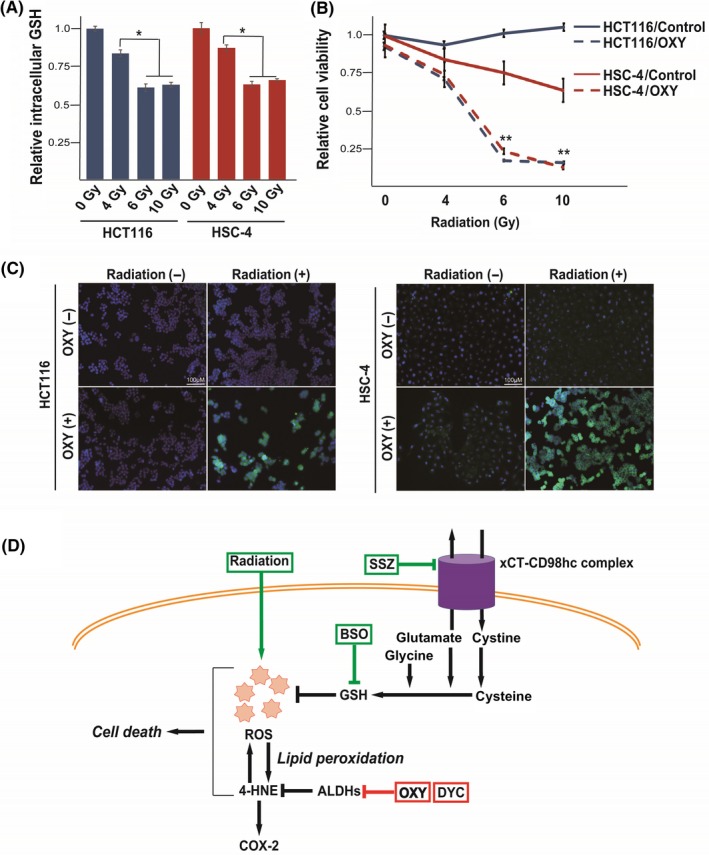Figure 5.

Oxyhedrine (OXY) sensitizes cancer cells to radiation treatment. A, Intracellular content of glutathione (GSH) in HCT116 and HSC‐4 cells at 24 h after onset of irradiation with 0, 4, 6, or 10 Gy. Data are expressed relative to the corresponding value for control cells and are means ± SD from three independent experiments. *P < .05. (Student's t test). B, Viability of HCT116 and HSC‐4 cells at 24 h after onset of irradiation with 0, 4, 6, or 10 Gy in the absence (control) or presence of OXY (50 µmol/L). Data are means ± SD from three independent experiments. **P < .01 versus the corresponding control value (Student's t test). C, Immunofluorescence staining of 4‐hydroxynonenal (4‐HNE; green) in HCT116 and HSC‐4 cells at 24 h after the onset of irradiation with 0 or 6 Gy in the absence or presence of OXY (50 µmol/L). Nuclei were also stained with DAPI (blue). Scale bars, 100 µm. D, Proposed mechanism for the action of combination therapy with OXY and either a GSH‐depleting drug (sulfasalazine [SSZ] or buthionine sulfoximine [BSO]) or radiation. Simultaneous inhibition of aldehyde dehydrogenase (ALDH) and depletion of GSH leads to accumulation of the cytotoxic aldehyde 4‐HNE and consequent cell death. COX‐2 gene expression is upregulated by 4‐HNE and may serve as a biomarker for such combination therapy. ROS, reactive oxygen species
